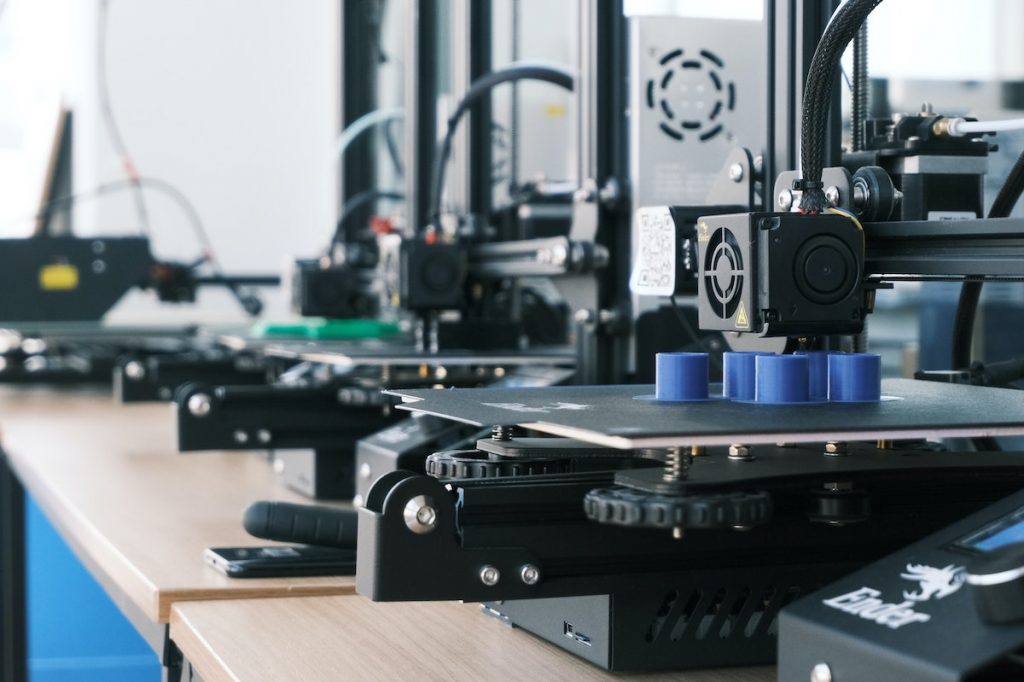The idea seems improbable. That’s how 3D printing can appear for the uninitiated. How can it be? For centuries, man has been building things in two steps. There’s the planning stage. An architect does that for a house. A chef chooses a menu in a restaurant. Then there’s the execution stage. Builders do that to construct a house. Cooks take care of the cooking. Now you may not need any of those people, at least on the execution side. With 3D printing, you can build a house and get the food you need: printed.
3D printing sound confusing. But the process, also dubbed additive manufacturing, is pretty straightforward. It’s basically a manufacturing process where the material is laid down layer by layer to form the final product: a three-dimensional object. The confusion comes as everyone usually associates the word ‘printing’ with a printer used in the office. Invented by Charles W. Hull in the mid-’80s, the first 3D printers were understandably quite pricey.
And yet, 3D printers are much cheaper now. Even better, your home can benefit from using one. No, it’s not just a portion of your property made out of the additive process. It’s the whole house 3D printed. Reality can sometimes be stranger than fiction.
Disrupting Industries
For lack of a better example, let’s take running. Any athlete can tell you no two humans have the same kind of feet, not even twins. While it’s nice to shop the latest Adidas or Nike pair of shoes for running, it might not be the best idea if you want the best fit.
Why? Simply put, the shoe designs you see in the department stores are all mass manufactured. One design is manufactured to fit all. But that’s the problem. Each human has a different pair. That is exactly why 3D printing matters.
Nike is now leveraging 3D printing. Your pair is designed for your own specifications. First, the Nike Flyprint Method captures your data, feet details, and how you run and use your feet. The final product is specifically designed to fit the contours of your feet.
Think of the advantages if each of us gets a pair of shoes manufactured to our specifications. It’s not just shoes. Such luxury has affected how various industries are doing things these days. For instance, 3D printing for dentistry allows orthodontic appliances that fit the patient’s mouth perfectly.
Plus, you have the advantage of speed here. With rapid prototyping, for instance, you have the capacity to design and manufacture a particular product and test its ability to satisfy a market. You can order a pair of shoes, for instance, and test their superiority after an hour or two.
Hands down, it’s also the cheapest way to manufacture a product. For one, traditional prototyping in the manufacturing industry is a tedious process that could require injection molding and CNC machining.

And the Things You Eat
But if you think 3D printing belongs to the industrial and medical settings only, you need to think again. It may be coming to your homes faster than you can imagine it doing.
Already, there’s 3D-printed food. Indeed, it can be the most savory application of additive manufacturing. Surprised? Don’t be. You might want to know which food can be 3D printed. You can’t create a chicken egg there, but how about pizza? 3D-printed pizzas are coming, experts point out.
To date, a German company is using 3D printers to come up with accessible meals for seniors who can’t eat food as young people do. If you want fine dining, 3D-reliant fine dining aptly called Food Ink has been operating in London since 2016. Not only do they serve a 3D-printed variety of dishes, but their chairs are also 3D printed. Needless to say, Food Ink is the world’s first 3D-printing Restaurant.
But that’s not the biggest surprise yet.
Building Your Dream House
We’re talking about houses built by 3D printing. Indeed, the technology is being used on a much grander scale: creating your dream house.
Why bother 3D printing homes? The answer to that is pretty straightforward. It’s half cheaper. How much will people save if they can build homes they love at half the price.
And it gets more interesting. Getting that 3D-printed house on the line means getting it at half the time. So you not only save money in building your dream property but also save a lot of time.
Simply put, it’s an irresistible proposition. More people can avail themselves of cheaper houses. Plus, since it takes a lot less time to get things standing, more people can avail themselves over time compared to traditional methods.
Surely, it’s a game-changer. With the technology present, it makes many things possible, not just in creating houses or products. People can look forward to the technology’s contributions.
